Tips for Watching and Photographing Butterflies
Updated: Aug. 29, 2022
Watching butterflies is a delight at any age, but finding them can be a challenge. Get tips to make butterfly watching easy and fun.
Love Watching Butterflies? Go Butterflying!
You don’t have to be a scientist to enjoy watching butterflies. (By the way, did you know that people who study them are called lepidopterists?) Butterfly watching, or butterflying, has caught on as a hobby in recent decades, and it’s not hard to see why. You don’t have to spend much time in the backyard before you’ll notice them flitting about.
For tips and advice, we consulted lepidopterist Robert Michael Pyle. The author of the National Audubon Society Field Guide to North American Butterflies, he did a Big Year of butterfly watching in 2008, setting out to see as many species as possible in 365 days—and writing another book, Mariposa Road, about the adventures of seeing all the different species. But you don’t have to devote a whole year to chasing butterflies to enjoy them. By simply slowing down, you’ll start to notice these beauties all around you. As Pyle says, it’s as easy as “visiting any sunny, flowery spot, standing still and seeing what happens.”
Learn how to attract butterflies in 9 easy ways.
Getting Started Watching Butterflies
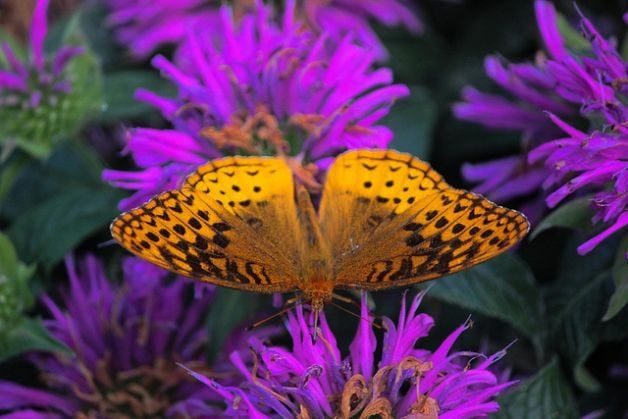
This hobby is parallel to the world of birding. In short, it involves finding, identifying and enjoying the many kinds of butterflies in the wild. It’s the perfect activity for anyone who enjoys being outdoors on gorgeous, sunny days—and who doesn’t? But there’s good news if you’re not an early bird! You don’t have to wake up with the birds to see butterflies. In fact, brunch time might be your best shot at peak diversity. Different butterfly species are active at different hours, so you can be in a single spot all day long and always find something new and intriguing.
One trick is to watch for specialized behavior like basking and hill topping. Especially on chilly mornings, butterflies can be found sunbathing, or basking, with their wings spread or folded flat so the warm rays will elevate their body temperature. Swallowtails and some other species often gather in large numbers for hill topping: Males cluster on open hilltops, while females look for suitable mates before flying downhill to seek host plants for laying eggs.
Do a little research about the species in your area. The North American Butterfly Association is a great resource; local chapters offer numerous field trips. Some state wildlife agencies can also provide valuable information about local butterflies. Most butterflies are choosy about habitat while some are more widespread. A good field guide will help you with identification and ranges. Many species look quite similar, but learning the major characteristics of butterfly families will help you figure out what’s what. One thing you’ll never have to worry about, of course, is identifying a butterfly by its song.
Don’t miss these beautiful butterfly pictures.
Watching Butterflies at Home
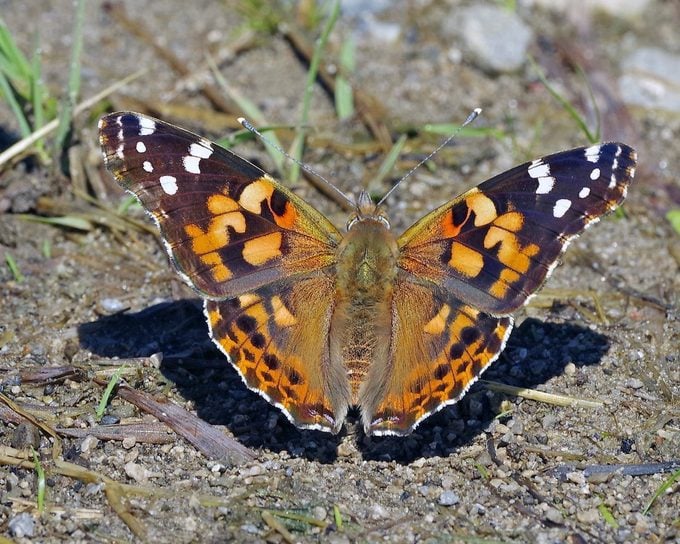
Almost any garden will attract certain species, but why not do some planning and plant a full-scale butterfly garden, with nectar plants to feed adults and host plants to nourish caterpillars? Or set up a feeding station by putting out fruit, especially citrus and rotting bananas. Seeing a butterfly proboscis in action is fascinating; I’ve spent hours watching eastern commas at my small window-tray feeder.
Simply watering the ground will attract butterflies, too: They’ll gather the salt they need from the edges of mud puddles. I’ve seen many a butterfly do this on hiking trails after a rain, but your backyard can be just as welcome an oasis. Learn how to make a DIY butterfly puddler.
Learn a little about flight periods. The adults of some species are visible for just a few weeks or even a few days a year. Pyle says that “in a given place you will generally find different suites of butterflies on the wing in early spring, midsummer and early autumn.”
Some species have a single brood each season, while others produce multiple generations in that time, resulting in extended flight periods with distinct peaks during the year. Most species overwinter as eggs, caterpillars or chrysalides. Don’t give up on butterflies in the winter, though. Mourning cloaks, commas and a few other species can be seen on the wing on warm winter days.
Do monarch butterfly sightings have meaning?
Identifying Butterflies
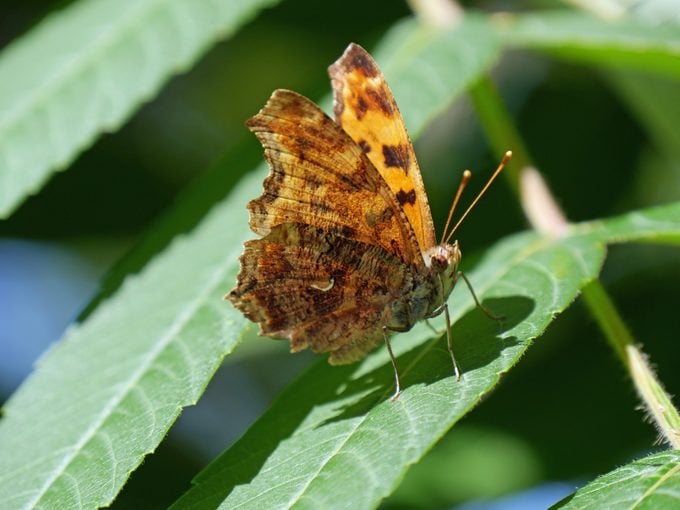
When you see a butterfly, start by considering the size: Is it large like an eastern tiger swallowtail, small like a spring azure or somewhere in between?
Next, look at wing shape. Are the wing edges irregular like those of an eastern comma? Do they have long “tails” on the hindwing, like a zebra swallowtail? The color pattern of those wings is important as well. Sometimes the best field marks involve minor details of just a few different spots or lines.
Flight action is worth watching, too. The monarch and viceroy butterflies have similar color patterns, but the monarch sails along with its wings held up in a shallow V, while the viceroy makes several quick flaps and then goes into a flat-winged glide.
Discover 3 butterflies that look like monarchs.
Photographing Butterflies
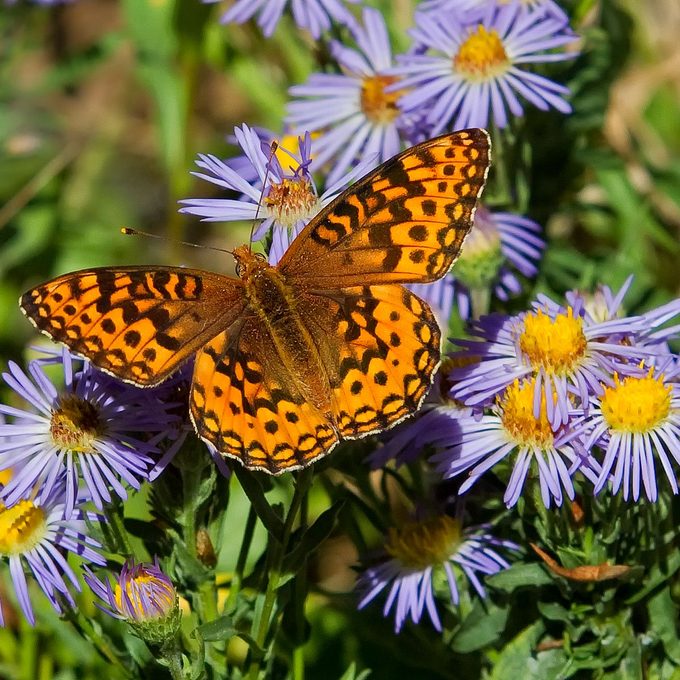
Both digital cameras and close-focusing binoculars have reduced the frustration of many butterfly watchers. “It still takes care and stealth to approach your subject, but with luck, patience and practice, you can obtain near views of many of the butterflies and other insects you encounter,” Pyle says.
One approach is to remain still and let them come to you. Challenge yourself to observe a single section of your flower bed. Take note of the behavior of different butterflies. Did they tend to visit the same plants again and again? How many kinds of butterflies did you spot in an hour?
If you do photograph butterflies, be sure to take pictures from all angles. Sometimes you need to see the wings from both the top and the underside in order to figure out the ID.
Where do butterflies go when it rains?
Binoculars for Watching Butterflies
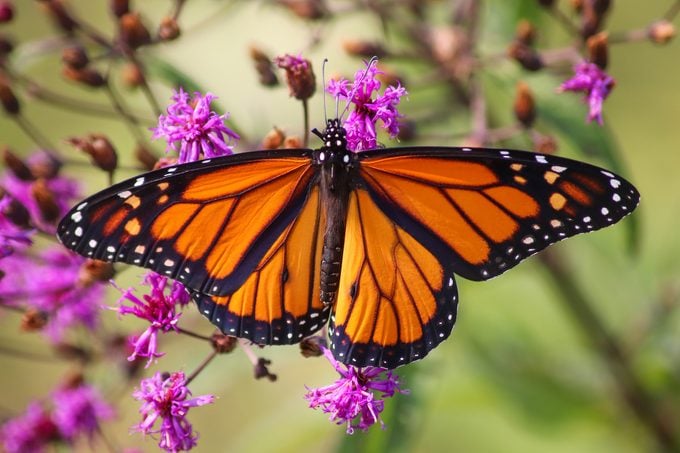
Until recent years, no binoculars would focus any closer than 20 or 30 feet away, too far to be useful for such small creatures. But optics companies have heeded the needs of naturalists, and today you can find binoculars that will focus down to less than five feet, allowing you to see fine details on even the tiniest butterflies without scaring them away.
Check the figures for “minimum focusing distance” when shopping for optics. Not only are close-focusing binoculars ideal for watching butterflies and other little things, they’ll also give you stunning looks at birds visiting bird feeders right outside your window.
Will butterflies visit your sugar water feeder?
How to Catch a Butterfly
Using a net is one of the cheapest and most effective ways to see butterflies. It’s fun, too! Catching butterflies in a net is pure joy for young and old alike. Once you have a flier in sight, an easy catch-and-release can satisfy your curiosity. If you’re more of a hands-on person, be quick and extremely gentle when you examine your catch, making sure to release it unharmed.
Whether you’re a casual observer or the next Robert Michael Pyle, take a moment to appreciate these backyard beauties. The more you see, the more you’ll want to learn. Perhaps you’re a bit more of a lepidopterist than you imagined!
Don’t miss 28 unique gifts for butterfly lovers.
Best Spots for Watching Butterflies
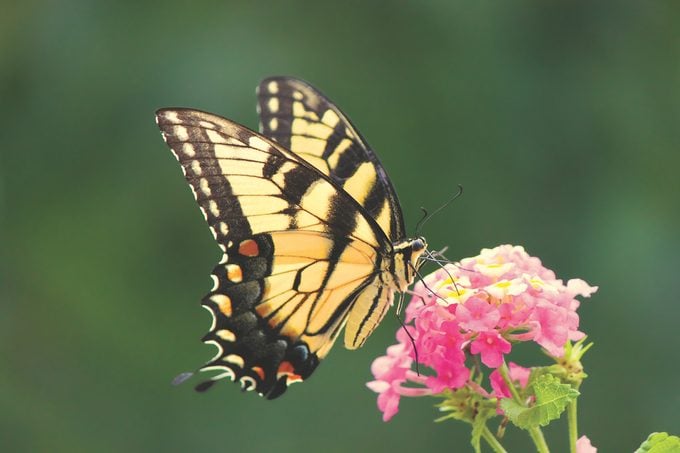
More than 650 species of butterflies live in the U.S. and Canada, and they come in limitless colors and sizes. To see all these varieties, you would have to travel to beautiful landscapes all over the continent, from mountain meadows in the Rockies to subtropical woods in the Florida Keys or desert canyons in California. Of course, you don’t actually have to travel to see butterflies. As with birding, butterfly watching offers endless surprises and rewards right in your own backyard.
Many species are abundant and widespread, but some will be found only in small areas. Author Robert Michael Pyle racked up more than 87,700 miles during his Big Year adventure, including over 32,500 miles in Powdermilk, his 1982 Honda Civic hatchback. Here, Pyle offers some of his favorite destinations for butterfly watching.
- North Slope, Alaska
- Sky Islands, Arizona
- Sierra Nevada, California
- Alpine Mountains, Colorado
- Everglades National Park and Florida Keys, Florida
- Ozark Mountains, Missouri
- Pine Barrens, New Jersey
- Lower Rio Grande Valley and Big Bend, Texas
- Prairie remnants throughout the Midwest
